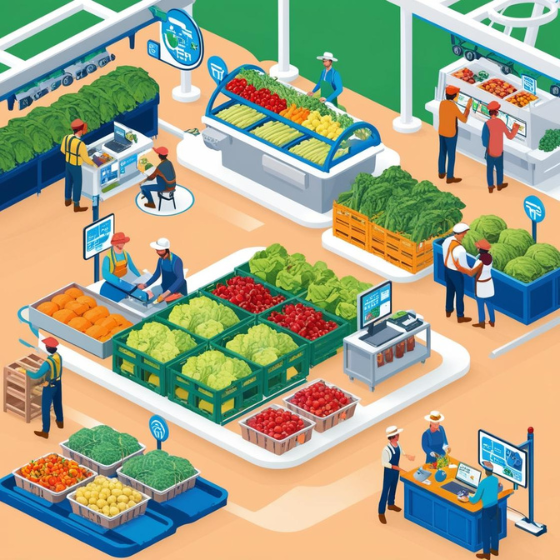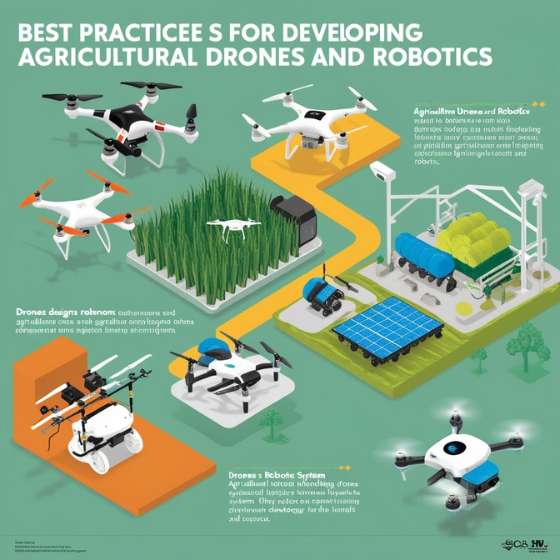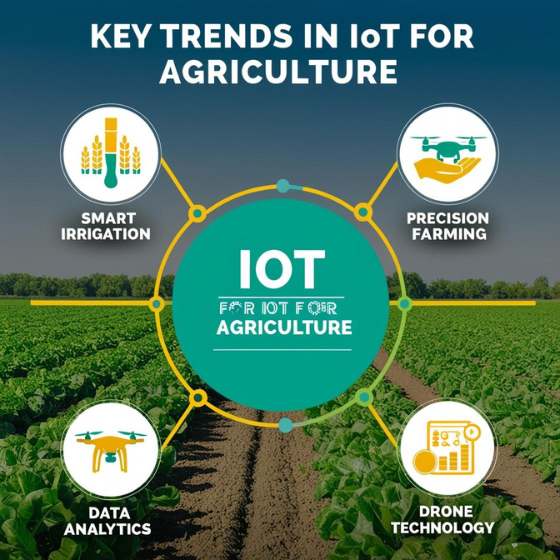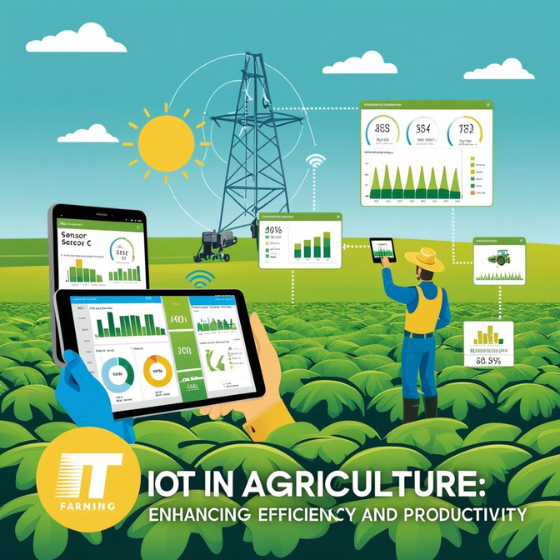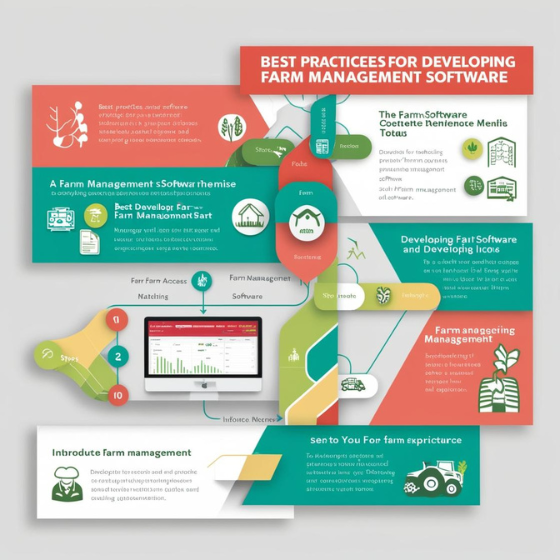Developing Efficient Agribusiness Marketplaces
Agribusiness marketplaces have become essential platforms in the agricultural sector, offering a seamless connection between farmers and buyers. With the digital transformation sweeping across industries, the demand for efficient agribusiness marketplaces continues to rise. These platforms not only help farmers reach new markets but also allow buyers to access fresh, reliable agricultural products. In this blog, we will explore how to develop an efficient agribusiness marketplace, the benefits it offers, and best practices to ensure success.
Why Agribusiness Marketplaces Are Critical
The agriculture industry faces numerous challenges, including market access, distribution inefficiencies, and price volatility. Agribusiness marketplaces offer solutions by facilitating direct connections between farmers and buyers, cutting out intermediaries and streamlining the supply chain.
Key benefits include:
- Access to a broader market: Farmers can reach buyers far beyond their local area.
- Faster transactions: Marketplaces automate the buying and selling process, reducing the time spent on each deal.
- Better price visibility: Both buyers and sellers can compare prices and make informed decisions.
These benefits have made agribusiness marketplaces a crucial tool for increasing the efficiency and sustainability of agricultural transactions.
Key Features of Efficient Agribusiness Marketplaces
To create an efficient agribusiness marketplace, certain features are necessary to ensure smooth operation and satisfaction for both buyers and sellers. The most important features to incorporate include:
1. User-Friendly Interface
For farmers and buyers, simplicity is key. Many farmers, especially in rural areas, may not be familiar with complex digital platforms. Therefore, it’s vital that the platform is intuitive and easy to navigate.
- Mobile-friendly design: Farmers often work in the field and may not have access to a desktop computer. A mobile-optimized platform ensures accessibility.
- Simple registration and onboarding: Users should be able to quickly create accounts and start listing or purchasing products.
2. Secure Payment Systems
Trust is essential in any marketplace. Secure payment systems ensure that transactions are protected, and both buyers and sellers feel confident in the process.
- Multiple payment options: Provide various payment methods to accommodate different users, including digital wallets and bank transfers.
- Payment protection: Offer an escrow service to hold payments until goods are delivered and inspected.
3. Integrated Logistics and Delivery Solutions
One of the biggest challenges in agribusiness transactions is ensuring the timely and safe delivery of agricultural products. Efficient agribusiness marketplaces integrate logistics and delivery solutions to streamline this process.
- Partner with trusted logistics companies: This ensures smooth delivery of products, especially for bulk orders.
- Tracking systems: Buyers and sellers should be able to track the delivery of goods in real time.
4. Data Analytics for Market Insights
Data analytics can significantly enhance the efficiency of agribusiness marketplaces. By analyzing trends, transaction data, and customer behavior, the platform can offer valuable insights to both farmers and buyers.
- Market forecasting: Provide farmers with insights into the demand for specific crops or products based on historical data.
- Product performance analytics: Help buyers evaluate product quality by offering reviews, ratings, and seller performance data.
5. Transparent Communication Channels
Clear and open communication is vital for building trust in any marketplace. A platform that offers easy ways for buyers and sellers to communicate can resolve issues quickly and ensure a positive user experience.
- Chat functionality: Allow real-time communication between buyers and sellers to discuss product details, prices, and delivery terms.
- Feedback and reviews: Enable buyers to leave reviews for sellers, which fosters trust and helps both parties make informed decisions.
Steps to Develop an Efficient Agribusiness Marketplace
Creating a successful agribusiness marketplace requires careful planning and execution. Below are the key steps for developing an effective and efficient platform:
1. Define Your Niche and Target Audience
Before developing an agribusiness marketplace, it’s crucial to understand your niche within the agricultural industry. Are you focusing on specific crops, livestock, or equipment? Who are your target buyers—wholesalers, retailers, or consumers?
- Conduct market research: Understand the challenges faced by both farmers and buyers in your niche.
- Tailor the platform’s features: Customize your marketplace based on the needs and preferences of your target audience.
2. Choose the Right Technology Stack
The technology behind your marketplace is key to its performance and scalability. Consider the following when selecting the right tech stack:
- Scalability: Choose a platform that can handle growth as more users and products are added.
- Security: Opt for secure, encrypted technologies to protect user data and financial transactions.
- Integration: Ensure your marketplace can integrate with third-party services like payment processors and logistics providers.
3. Develop an MVP (Minimum Viable Product)
Rather than developing a fully-fledged marketplace right away, start with an MVP. An MVP is a version of your platform with just enough features to meet user needs. This approach allows you to test your ideas, get feedback, and make improvements before launching the final product.
- Focus on core features: Start with essential features such as product listing, secure payments, and messaging.
- Test with real users: Get feedback from both farmers and buyers to see what works and what needs improvement.
4. Marketing and User Acquisition
Once your marketplace is developed, it’s time to attract users. The success of your agribusiness marketplace depends on the number of buyers and sellers using it. Effective marketing strategies include:
- Targeted advertising: Run ads on social media platforms like Facebook and Instagram, targeting farmers and agricultural buyers.
- Content marketing: Share valuable content such as blog posts, case studies, and industry reports that highlight the benefits of your marketplace.
- Referral programs: Encourage current users to refer others to the platform by offering incentives like discounts or credits.
5. Continuously Improve Based on User Feedback
The work doesn’t end once your marketplace is up and running. Continuously gather feedback from users to improve the platform’s features and functionality. Regular updates and enhancements ensure that your marketplace stays competitive and meets the evolving needs of the agricultural community.
- User surveys: Send surveys to gather feedback on user experience and satisfaction.
- Regular updates: Roll out new features, bug fixes, and improvements to keep the platform running smoothly.
Conclusion
Agribusiness marketplaces are revolutionizing how farmers and buyers connect. By leveraging technology, these platforms streamline the buying and selling process, reduce costs, and open up new market opportunities for both sides. To develop an efficient agribusiness marketplace, focus on creating a user-friendly platform with secure payments, integrated logistics, data analytics, and transparent communication channels. By following these best practices and continuously improving the platform, you can build a marketplace that delivers value to all stakeholders in the agricultural industry.
Want to create your own efficient agribusiness marketplace? Explore Sodio’s solutions for building scalable, user-friendly platforms that connect farmers and buyers. Contact us today to learn more about how we can help bring your agribusiness marketplace vision to life
